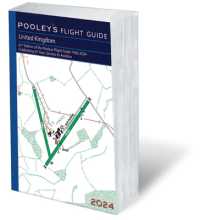- ホーム
- > 洋書
- > 英文書
- > Politics / International Relations
Full Description
Uses a case study method to teach students clinical assessment skills for working in the mental health fieldOrganized by types of disorders, Mental Health in Social Work: A Casebook on Diagnosis and Strengths-Based Assessment emphasizes DSM diagnoses of mental disorders that are commonly seen in clinical and social service settings. Becoming conversant with the DSM will allow readers to: 1) offer clients appropriate referrals and treatment; 2) communicate effectively with other mental health professionals; and 3) be eligible for third-party reimbursement. While gaining competence with DSM diagnosis, the reader will also learn to understand clients holistically as they proceed with the assessment and intervention process. In this update, the ordering of the chapters and content in the chapters themselves have been revised to reflect the changes in the DSM-5. Learning objectives are now included in each chapter. Advancing Core Competencies Series - As part of the Advancing Core Competencies Series, this title is designed to help students apply CSWE's competencies and practice behaviors examples to specialized fields of practice. Readers will gain experience answering licensing-type higher-level thinking questions tied to the competencies.
Contents
In This SectionI) Brief Table of ContentsII) Detailed Table of Contents I) Brief Table of Contents PART ONE: ASSESSMENTChapter 1: Diagnosis and the Social Work ProfessionChapter 2: Biopsychosocial Risk and Resilience and Strengths Assessment PART TWO: NEURODEVELOPMENTAL DISORDERS Chapter 3: Autism Spectrum DisorderChapter 4: Neurodevelopmental Disorders: Attention-Deficit Hyperactivity Disorder PART THREE: SCHIZOPHRENIA SPECTRUM AND OTHER PSYCHOTIC DISORDERSChapter 5: SchizophreniaPART FOUR: BIPOLAR AND RELATED DISORDERSChapter 6: Bipolar and Related DisordersPART FIVE: DEPRESSIVE DISORDERSChapter 7: Depressive DisordersPART SIX: THE ANXIETY, OBSESSIVE-COMPULSIVE, AND TRAUMA AND STRESSOR-RELATED DISORDERSChapter 8: The Anxiety, Obsessive-Compulsive, and Trauma and Stressor-Related Disorders PART SEVEN: FEEDING AND EATING DISORDERSChapter 9: Eating Disorders PART EIGHT: DISRUPTIVE, IMPULSE CONTROL, AND CONDUCT DISORDERSChapter 10: Bipolar DisorderPART NINE: SUBSTANCE-RELATED AND ADDICTIVE DISORDERS Chapter 11: Substance-Related and Addictive Disorders PART TEN: NEUROCOGNITIVE DISORDERSChapter 12: Alzheimer's DiseasePART ELEVEN: PERSONALITY DISORDERSChapter 13: Borderline Personality Disorders II) Detailed Table of ContentsPART ONE: ASSESSMENTChapter 1: Diagnosis and the Social Work ProfessionThe DSM Classification SystemMental Status Examination Limitations of the DSMChapter 2: Biopsychosocial Risk and Resilience and Strengths Assessment Definitions and DescriptionIndividual FactorsSocial MechanismsSocietal ConditionsGuidelines for Eliciting and Enhancing Client StrengthsConclusionPART TWO: NEURODEVELOPMENTAL DISORDERS Chapter 3: Autism Spectrum DisorderPrevalence and ComorbidityAssessment Biopsychosocial Risk and Resilience InfluenceInterventions Critical PerspectiveChapter 4: Neurodevelopmental Disorders: Attention-Deficit Hyperactivity Disorder Prevalence and ComorbidityAssessing ADHDBiopsychosocial Risk and Reslience InfluencesInterventionCritiqueCritical PerspectivePART THREE: SCHIZOPHRENIA SPECTRUM AND OTHER PSYCHOTIC DISORDERSChapter 5: SchizophreniaPrevalence and ComorbidityAssessments Biopsychosocial Risk and Resilience InfluencesIntervention Critical PerspectivePART FOUR: BIPOLAR AND RELATED DISORDERSChapter 6: Bipolar and Related DisordersPrevalence and ComorbidityAssessment of Bipolar DisorderBiopsychosocial Risk and Resilience Influences InterventionCritical PerspectivePART FIVE: DEPRESSIVE DISORDERSChapter 7: Depressive DisordersPrevalence and Comorbidity of DepressionAssessmentBiopsychosocial Risk and Resilience InfluencesInterventionCritical PerspectivePART SIX: THE ANXIETY, OBSESSIVE-COMPULSIVE, AND TRAUMA AND STRESSOR-RELATED DISORDERSChapter 8: The Anxiety, Obsessive-Compulsive, and Trauma and Stressor-Related Disorders Prevalence and ComorbidityAssessment if the Anxiety Disorders Biopsychosocial Risk and Resilience InfluencesInterventionCritical PerspectivePART SEVEN: FEEDING AND EATING DISORDERSChapter 9: Eating Disorders Prevalence and ComorbidityAssessmentBiopsychosocial Risk and Resilience InfluencesInterventionCritical PerspectivePART EIGHT: DISRUPTIVE, IMPULSE CONTROL, AND CONDUCT DISORDERSChapter 10: Bipolar DisorderPrevalence and ComorbidityAssessment of Odd and CDBiopsychosocial Risk and Resilience InfluencesIntervention for Odd and CDCritical PerspectivePART NINE: SUBSTANCE-RELATED AND ADDICTIVE DISORDERS Chapter 11: Substance-Related and Addictive Disorders Prevalence and ComorbidityAssessment Biopsychosocial Risk and Resilience InfluencesInterventionCritical PerspectivePART TEN: NEUROCOGNITIVE DISORDERSChapter 12: Alzheimer's DiseasePrevalence and ComorbidityAssessment Guidelines Biopsychosocial Risk and Resilience InfluencesInterventionCritical PerspectivePART ELEVEN: PERSONALITY DISORDERSChapter 13: Borderline Personality Disorders Characteristics of Personality DisordersBorderline Personality DisorderPrevalence and ComorbidityAssessmentBiopsychosocial Risk and Resilience InfluencesInterventionCritical PerspectiveAppendix: Case Workbook








